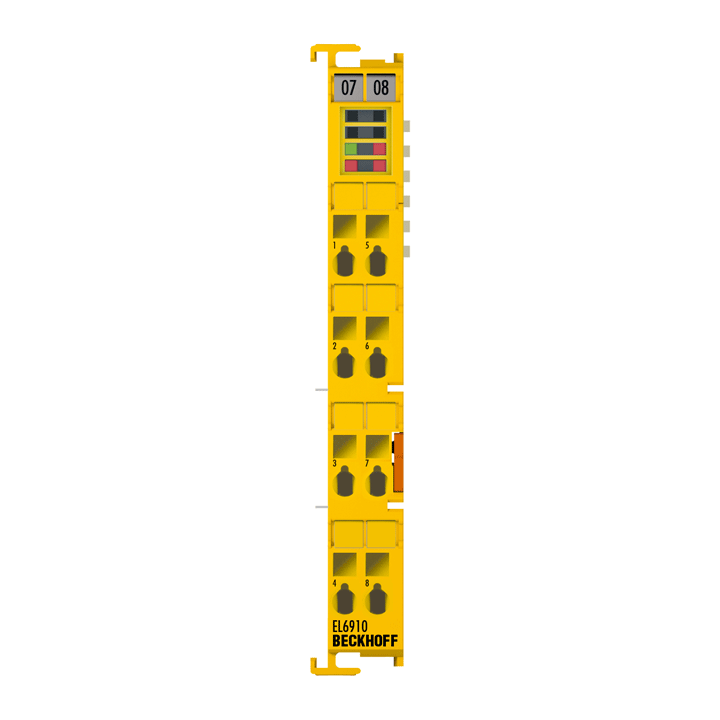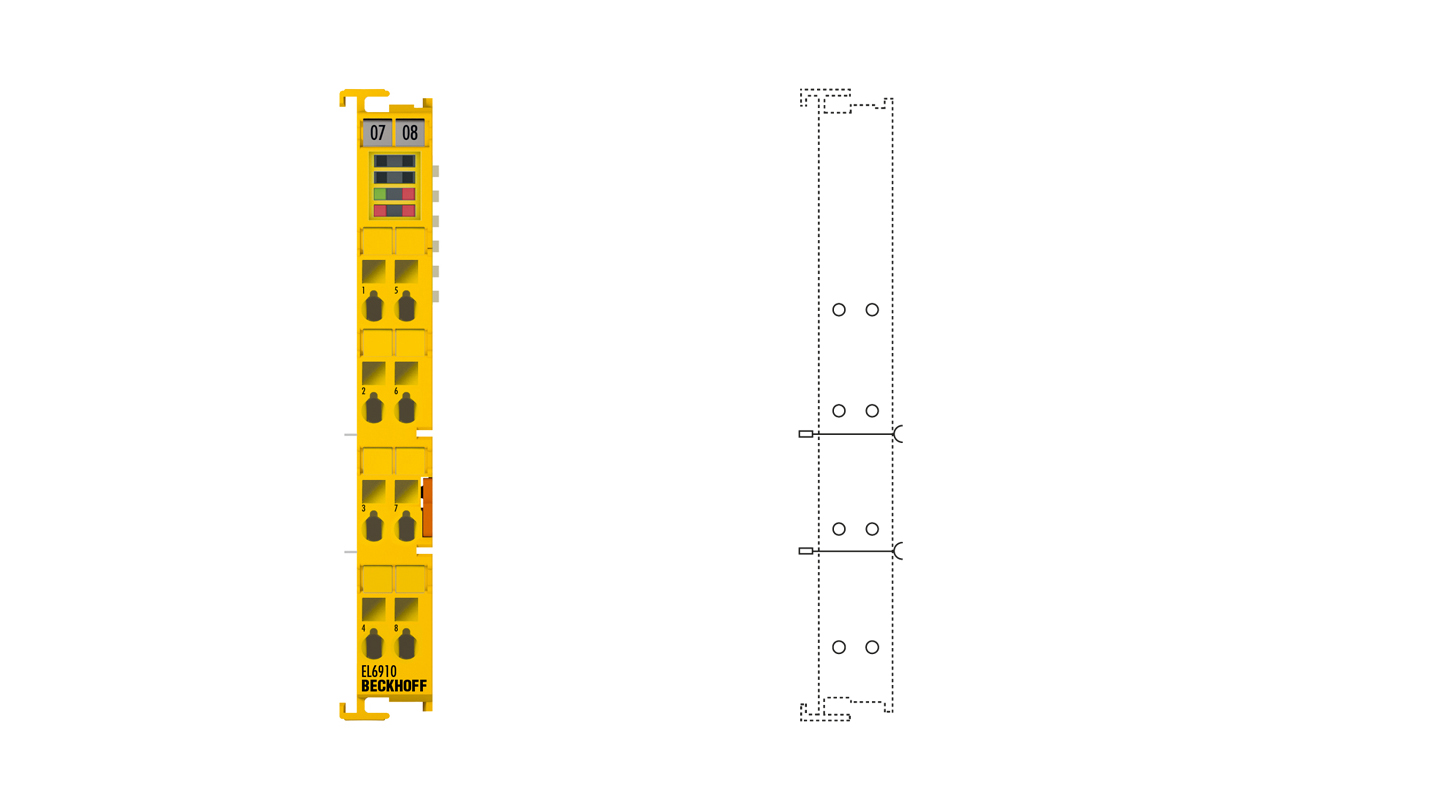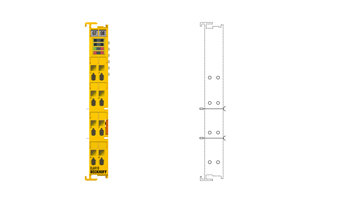
The EL6910 represents the new generation of dedicated safety controllers. While the EL6900 as its predecessor provided only function blocks based on Boolean values, the EL6910 offers a wide variety of certified function blocks that enable the safe processing of analog values and thus the implementation of even more complex safety applications.
In addition to the extension of the processable data types, the so-called customizing function has been established in order to be able to appropriately map current requirements for non-safety-oriented applications with regard to modularization and dynamization in the field of safety technology too. Customizing allows modules of the safety application to be configured so that they are capable of being permanently or temporarily disabled. The disablement or re-enablement can also take place subsequently at runtime.
The EL6910 TwinSAFE Logic can establish 212 connections to other devices. In addition to safe communication connections via FSoE, connections via PROFIsafe are also possible (master and slave). TwinSAFE SC technology is also supported. This technology allows analog signals from the actual standard EtherCAT I/Os (with the identifier -009x) to be safely transmitted to a TwinSAFE Logic-capable component and used there to check the plausibility of this analog signal and to use it in terms of safety using another diversified analog signal (usually up to PL d).
Another highlight of the introduction of the new controller generation is the incremental download. In contrast to its predecessor, the safety project now consists of four components (logic, parameters, mapping, info data), each of which has its own checksum. Thus, in the event of a change to the safety project, an effect analysis can be performed on the basis of these sub-checksums. This simplifies the validation and verification of the safety project. This division is also reflected in the extended user management, so that rights can now be granted on the basis of different components (e.g., a user who can only change the information data of a safety project).
Finally, the new generation of safety controllers now has a diagnostic history directly on the component. All errors that have occurred can be read directly from the component and evaluated.
The EL6910 is programmed using the TwinCAT 3 Safety Editor.
Special features:
- analog value processing
- incremental download
- diagnostic history directly on the component
- up to 212 safe connections
- up to 128 TwinSAFE groups
- up to 512 function blocks
- up to 40 users
- PROFIsafe master and slave support
- TwinSAFE SC support
Product status:
regular delivery
Product information
| Technical data | EL6910 |
|---|---|
| Specification | link unit between safe input and output signals |
| Protocol | TwinSAFE/Safety over EtherCAT |
| Cycle time | approx. 1 ms/according to project size |
| Fault response time | ≤ watchdog time (parameterizable) |
| Current consumption power contacts | – |
| Current consumption E-bus | typ. 160 mA |
| Installation position | horizontal |
| Safety standard | EN ISO 13849-1:2015 (Cat. 4, PL e) and EN 61508:2010 (SIL 3) |
| Weight | approx. 50 g |
| Protection rating | IP20 |
| Ex marking | ATEX: II 3 G Ex ec IIC T4 Gc IECEx: Ex ec IIC T4 Gc |
| Housing data | EL-12-8pin |
|---|---|
| Design form | compact terminal housing with signal LEDs |
| Material | polycarbonate |
| Dimensions (W x H x D) | 12 mm x 100 mm x 68 mm |
| Installation | on 35 mm DIN rail, conforming to EN 60715 with lock |
| Side by side mounting by means of | double slot and key connection |
| Marking | labeling of the BZxxx series |
| Wiring | solid conductor (s), flexible conductor (st) and ferrule (f): spring actuation by screwdriver |
| Connection cross-section | s*: 0.08…2.5 mm², st*: 0.08…2.5 mm², f*: 0.14…1.5 mm² |
| Connection cross-section AWG | s*: AWG28…14, st*: AWG28…14, f*: AWG26…16 |
| Stripping length | 8…9 mm |
| Current load power contacts | Imax: 10 A |
*s: solid wire; st: stranded wire; f: with ferrule
Loading content ...
Loading content ...
Loading content ...
Loading content ...
Loading content ...
© Beckhoff Automation 2025 - Terms of Use




